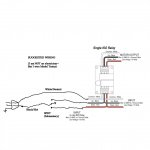Some told me to install the switch in the picture. I'm just wondering if it's even necessary. The circuit feeds 2 electric (120volt) window shades. There is a 120 volt up down switch on the wall. When energized by the momentary switch one wire makes the shades go up the other makes the shades go down. Simple
This contraption makes no sense to me at all. It does not change voltage, hz, it does not rectify or anything. It's like a complicated wire nut.
Can anyone explain why it needs to be installed.
Thank you,


Sent from my Pixel 2 using Tapatalk
This contraption makes no sense to me at all. It does not change voltage, hz, it does not rectify or anything. It's like a complicated wire nut.
Can anyone explain why it needs to be installed.
Thank you,


Sent from my Pixel 2 using Tapatalk


